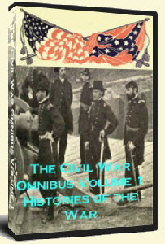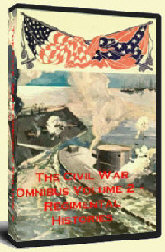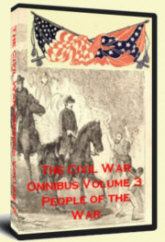It’s hard to imagine a time before television news and radio news, not to mention news on the Internet, but during the Civil War, citizens had to rely on two major sources of news – word of mouth and newspapers.
Although word of mouth was the most expedient source of news about the war, newspapers provided citizens and soldiers alike with the most detailed accounts of war that that had ever been published in America or in any other country for that matter. New printing technologies allowed newspapers and magazines alike to publish another new technology – photographs. The advent of the telegraph made news from the front lines of the war available to the press room in minutes rather than days or weeks. Newspapers provided a tangible account of a war that developed by the day. Read the rest of this entry »
Comments Off on Newspapers During the Civil War
Early submarines and submarine warfare were very risky operations. Many early submarines were plagued with problems and it took about 100 years from launch of the first military submarine – the Turtle in 1775 – until the first successful military mission – by the Hunley on February 18,1864.
That one event changed the face of warfare forever.
While it would still be many decades before submarines became a proven part of any naval battle strategy, it was the Hunley – with all its quirks and problems – that finally proved that submarines could make a significant different in the fate of naval warfare.
So what was the H.L. Hunley? Read the rest of this entry »
Comments Off on The H.L. Hunley Confederate Submarine
The second Battle of Franklin Tennessee in late November of 1864 took its toll on the citizens of Franklin. Many had offered their homes as hospitals for the wounded, while others had assisted with the burial of the dead. Few, however, made the sacrifices that the McGavock family of Carnton Plantation had.
Hundreds of dead had been brought to Carnton following the battle. Wounded men were placed on the Greek Revival porches of the sumptuous Carnton home, slave quarters were turned into makeshift hospital tents, and the grounds of the home were populated with tents holding injured soldiers, while others still were laid on the grounds themselves. Colonel John McGavock and his wife Carrie saw to the welfare of around 300 men in their own home-turned-hospital. Carrie McGavock and her children tended the wounded, even assisting in surgery. For months after the battle, convalescing soldiers remained in the McGavock home, recuperating under the care of the McGavock family. Read the rest of this entry »
When Civil War historian and preservationist Robert Hicks released his book The Widow of the South in 2005, he fictionalized the story of Carrie McGavock, who turned acres of her family’s home, Carnton Plantation, into a cemetery for the Confederate dead after the second Battle of Franklin, Tennessee. A best-seller, Hicks’ novel brought a long-forgotten chapter in the story of the Civil War to a new generation of readers. Hicks’ novel is a work of fiction, but the real story of Carnton Plantation, Carrie McGavock and the cemetery she helmed is just as fascinating.
Carnton Plantation, located at Franklin, Tennessee, was constructed between 1815 and 1826 by former Nashville mayor Randal McGavock. Presidents James Polk and Andrew Jackson were both visitors to Carnton, which McGavock built the plantation on the site of a Revolutionary War land grant belonging to his father. Carnton originally consisted of around 1,420 acres. Read the rest of this entry »
Comments Off on Carnton Plantation and the “Widow of the South” – the True Story, pt. 1
After his election to the presidency, Abraham Lincoln made appointments to his cabinet that perplexed not only his advisors but the entire nation. Of the Republicans he appointed, he chose men who openly disagreed with his policies, who’d supported his opponent, and even a couple who’d run against him for the presidential nomination. Many of these men had their own reasons for wishing to see him fail. Secretary of State William Seward and Secretary of the Treasury Salmon P. Chase, just to name two, both had designs on the White House, but one of his most surprising appointments was that of Edwin Stanton, an appointment that not only crossed party lines, but also put at the helm of the Civil War who’d referred to Lincoln on more than one occasion as “the original gorilla.”
Lincoln’s propensity for keeping his friends close and his enemies closer was obvious, but somehow Stanton, an enemy who was not only a Breckinridge Democrat but loudly critical of Lincoln, somehow missed being included in Lincoln’s initial appointments, despite his apparent qualification. Lincoln’s first appointee to the position of Secretary of War was Simon Cameron, a Pennsylvanian thought to be useful for his political and business ties. However useful Cameron was politically, he was certainly not of the caliber that the position needed during a civil war, and the fact that he would have to be replaced soon became obvious, even to Lincoln, who tended to overlook the faults of others, to a fault. Read the rest of this entry »
Comments Off on Edwin Stanton – Master of War


